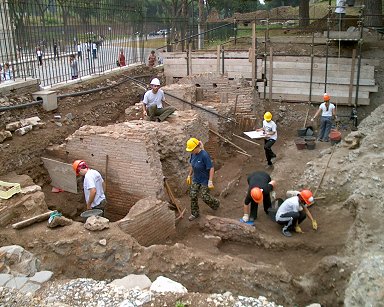Don’t panic. Radioactive gas doesn’t have to derail a home sale. Radon is a radioactive gas that emanates naturally from soil and rock. Invisible and odorless, it can easily leak into a house through the foundation and remain undetected. Radon is dangerous because it can cause lung cancer. Every year in the U.S. some 21,000 people die because of radon.

Radon has a nickname that could easily scare away any potential home buyer: “The Silent Killer.” But there’s no need for radon to be a deal-breaker in any real estate transaction. Thanks to proven mitigation techniques, high radon concentrations in a home’s interior can be reliably and permanently reduced to acceptable levels.

A radon test should be part of any building inspection
The building inspection that takes place when a home is sold should include a radon test – even if the house has an existing radon mitigation system. As long as proper house conditions are maintained during the “detection” phase of a radon test, results will be accurate. If the house shows a concentration level above 4 picocuries per liter, the EPA recommends that radon levels be reduced with a mitigation system. Since radon can be found just about anywhere, most communities have at least one radon mitigation specialist. National Radon Defense is a good place to start looking for a radon mitigation contractor.
Good, better and best in radon mitigation
A typical radon mitigation system consists of a network of large-diameter plastic pipe and an in-line fan. The fan runs continuously to suck radon-laden air through the pipe from one or more locations beneath the basement or crawl space floor. The radon gas is then expelled to the exterior, where it dissipates harmlessly into the atmosphere. A radon mitigation system for an average house can cost anywhere from $900 to $1800. The broad price range can be explained by some of the design details explained below.
An experienced radon mitigation contractor will take pains to design and install a mitigation system that’s as unobtrusive as possible. The exhaust stack that carries radon up above the roof line can be installed against the home exterior. Hopefully, the contractor will be able to locate the pipe against the side or back of the wall rather than against the street-side façade. Alternately, the exhaust stack can extend through the home interior, hidden in closets or chaseways. Interior installations cost more, but keep the system out of sight. If a house has a finished or partially finished basement, the contractor should try to keep the pipe runs hidden if possible. The fan location is also an important consideration. Though quiet, the fan should not be close to a bedroom window in an exterior installation.
In many parts of the country, radon is far too prevalent to be a stigma when selling a house. Real estate agents and homeowners understand that radon mitigation systems work effectively to maintain minimum exposure levels, and don’t cost much to operate. The fan is the only wear item in a radon system, and a fan can easily operate for 5 years or more before replacement is required.
Armed with this basic information about radon, a home buyer can embrace the excitement of finding the best house without losing sleep over hazardous radon exposure. Once you know he’s in the room, the Silent Killer can always be blown away.
Written By: Tim Snyder is a journalist specializing in sustainability, energy efficiency and home building topics.
Christine is the Content Marketing Coordinator for Homes.com. She's a small town girl at heart, who currently lives in Norfolk, VA with her husband and their fur baby. When she's not working, she enjoys cooking, decorating, traveling, and binge watching Netflix. As a proud Virginia Tech alum, she also loves cheering on the Hokies!

















